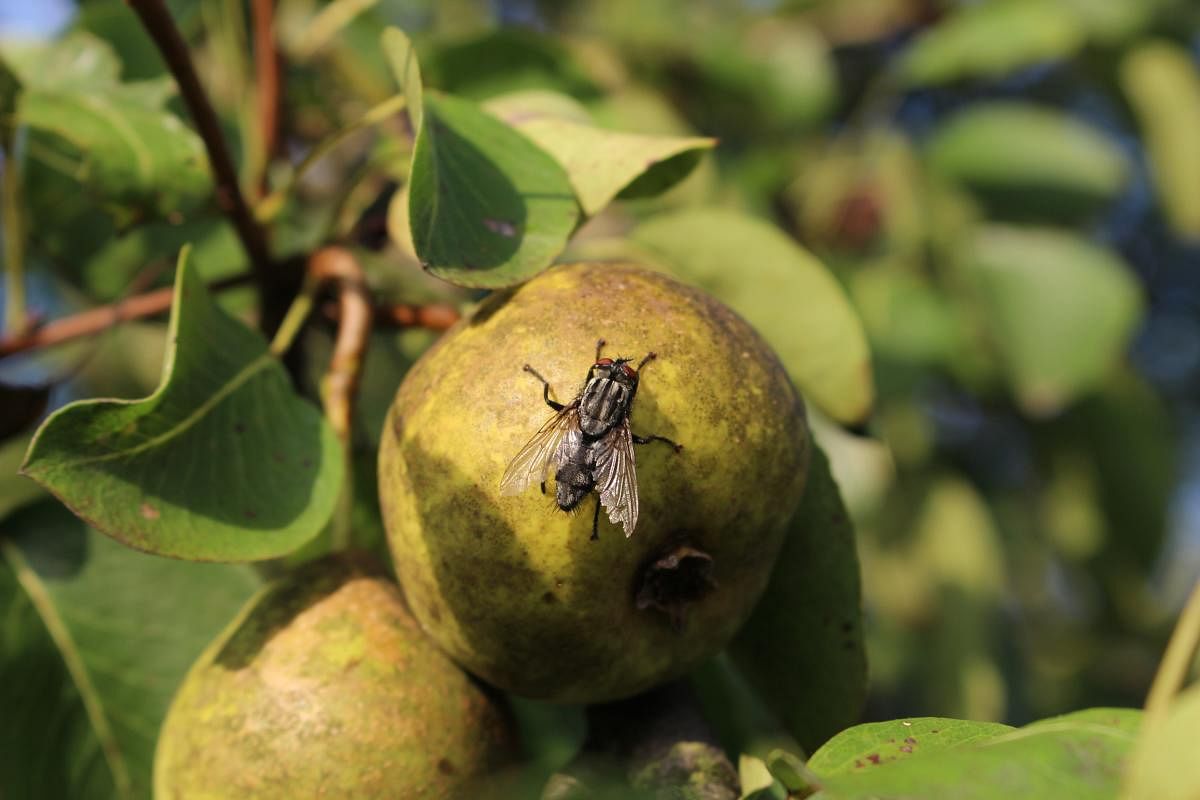
Every time I see an ear of unpeeled baby corn with its brown corn silk tail, I am reminded of coremata. The bushy tail sported by some male butterflies or moths is called coremata.
During mating season, the male displays its coremata while releasing pheromones to attract females. Each butterfly or moth has its own signature pheromone to attract a mate.
The history of pheromones dates back to the 1870s when French naturalist John Fabre observed that a newly-born female great peacock moth in his laboratory attracted nearly 150 male peacock moths for copulation.
The female moth was contained within a mesh jar, and wherever John Fabre moved the jar within the laboratory, the male moths accompanied it. This peculiar behaviour was also observed in insects and bugs, leading to the discovery of pheromones. Pheromones are the odours that butterflies, moths, bugs, and even ants use to communicate with one another. In addition to mating, it is also used to mark territories, communicate the presence of enemies, and determine the availability of food to the community.
These pheromones are now being utilised by entomologists to develop new methods of pest management and combat infestations. This is environmentally friendly and cost-effective in comparison to pesticides that harm pollinators.
In my backyard, I have the habit of tossing vegetable scraps into the soil surrounding the coconut tree. Occasionally, some of the seeds in the waste tend to germinate. Citrus, peppers, and tomatoes are some of the plants that grow. A few years ago, surprisingly, a guava tree sprouted from one of the discarded fruits. As it grew on the underside of the leaves, there were numerous white flies. I sprayed neem oil and other home remedies in an effort to eliminate them but in vain. When the guava tree began to flower, the majority of its fruits were already rotten. After some research, I discovered that fruit flies were responsible for the problem.
Fruit flies are a diverse group of insects, with over 1,500 species in the genus. They impact numerous fruit trees and crops.
When a female fruit fly is ready to lay eggs, she searches for a semi-ripe fruit. She burrows into the skin to lay her eggs. The larva that emerges consumes and destroys the fruit. Therefore, when the insides of a fruit feel soft when you squish it, just know that they have been consumed by worms.
Use with caution
Methyl eugenol occurs naturally in numerous spices and medicinal plants. It is widely used in the food industry to impart flavour. Entomologists studying pheromones discovered that male fruit flies prefer the scent of methyl eugenol because it enhances their mating abilities. Using this, they developed baits to lure male flies. A small block of wood coated with volatile methyl eugenol is suspended in a container with a small hole.
Males attracted by the pheromone vapours enter the container to feed on the compound and get trapped. As a result, the number of males in the open decreases.
This decreases the reproduction rate, and therefore, preserves the fruit. I bought a pheromone trap online and installed it. I could not believe how many flies it captured. I also got a sticky pad as an additional white fly attractant. In a few months, the leaves were no longer infested with white flies. The ants had also disappeared. The fruits were ripe and fresh.
This technique to attract males is called the male annihilation technique. There are distinct pheromone attractants for specific insects.
When these traps are placed on crops that require protection, the infestation is minimal to nonexistent. These traps are also useful for studying the behaviour and population of insects. This is referred to as the Integrated Pest Management System, and it is becoming increasingly popular.
The handling of these baits requires caution. It is essential to wash your hands after installation to prevent the pheromone from being transferred to your body and stop insects and other pests from following you! Additionally, sticky traps should not be placed in areas frequented by birds.
I find these traps to be more useful and effective than spraying any type of pesticide. Hope you will find them useful too. Until next time, cheers from Thunbergia Mysorensis.
Motley Garden is your monthly kaleidoscopic view into a sustainable garden ecosystem.
The author believes that gardening is not just about plants and how to nurture them. It is also about bees, butterflies, insects, flies, and bugs that make it their home. She is on social media as @neelavanam